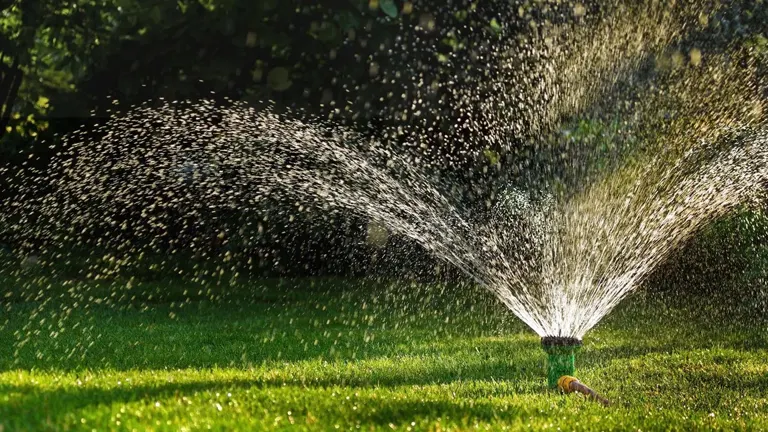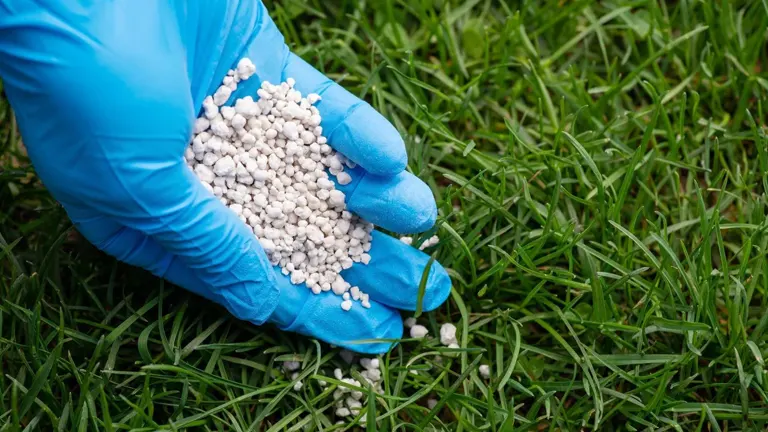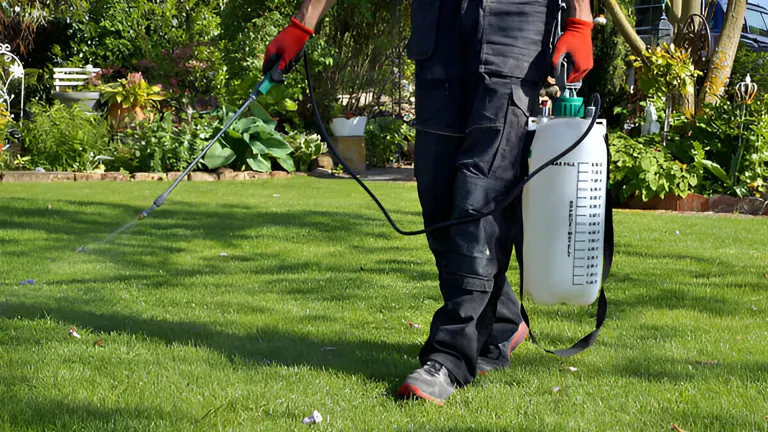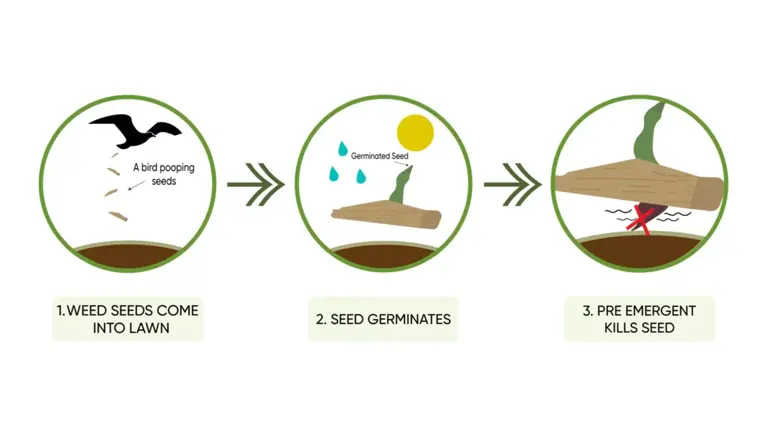Easy Beginner Lawn Care Tips: Boost Your Lawn in 4 Simple Steps
- May 6, 2024
- 0 comment
When I first moved into my house three years ago, the overwhelming world of lawn care advice online made it seem like a high-cost, high-effort hobby. I decided to strip it back to the basics and learn through doing—keeping it simple and affordable. Here’s how you can do the same, avoiding common pitfalls and gradually becoming a lawn care pro.
List of Easy Beginner Lawn Care Tips:
1. Get Mowing
Think of mowing as more than just a chore—it’s one of the best ways to encourage a lush, thick lawn. Regular mowing signals your grass to grow dense and robust, helping it choke out weeds and resist pests. When I first tackled lawn care, I was mowing two to three times a week. While that frequency isn’t necessary for everyone, maintaining a routine of at least once a week is crucial for healthy growth.

Choosing the right mowing height is also key, as it varies with grass types. For instance, I learned the hard way that cutting the grass too short can actually stress it, making it more susceptible to diseases and pests. This mistake is common among beginners and can lead to a weak, patchy lawn. So, check what’s recommended for your lawn type and adjust your mower accordingly—this small step can make a big difference in your lawn’s overall health and appearance.
2. Water Wisely
Watering your lawn might seem straightforward, but getting it just right is crucial for healthy growth. The rule of thumb is to provide about an inch of water per week, possibly more during intense heat. To measure this effectively, I recommend the tuna can trick—a simple yet genius method. Just place an empty tuna can on your lawn, and aim to fill it to the brim each week through your watering efforts.

Timing also matters. Watering in the morning is ideal because it helps prevent the growth of fungal diseases, which are more likely to develop if you water in the evening and the moisture sits overnight. I learned the importance of this the hard way. In my early days of lawn care, I struggled with overwatering, which led to persistent fungal issues. It’s a common pitfall that can take some time and adjustment to master, but once you do, you’ll see significant improvements in the health and appearance of your lawn.
3. Fertilize for Success
Just like us, your lawn needs nourishment to thrive. Think of fertilizer as a multivitamin for your grass—it boosts growth, enhances greenness, and strengthens against pests and diseases. For beginners, I highly recommend starting with organic fertilizers. They are forgiving and won’t harm your lawn even if you accidentally apply a little too much. Brands like Milorganite are popular for their ease of use and effectiveness.

A good rule of thumb is to feed your lawn once a month during the growing season. This regular feeding schedule ensures that your grass gets the nutrients it needs to grow lush and thick. It’s particularly important if your lawn was neglected before you took over its care, as the initial nutrient boost can make a dramatic difference. Remember, adding some form of fertilizer is always better than adding none at all; even a little can go a long way in revitalizing and maintaining a healthy lawn.
4. Control Those Weeds
Weeds can be pesky gatecrashers in the garden party that is your lawn. Tackling them effectively is crucial for maintaining the health and aesthetics of your yard. Initially, focus on the weeds you can visibly see. Using a post-emergent weed killer is a straightforward way to spot-treat these unwanted guests. Products like Spectracide or Roundup are effective choices that can help you manage these intruders efficiently.

As you become more experienced in lawn care, it’s wise to implement a more proactive weed prevention strategy. Consider integrating a pre-emergent herbicide into your lawn care regimen at the start of the growing season to prevent weed seeds from germinating in the first place.

For those who prefer a more natural approach, adjusting your mowing technique can be incredibly effective. By setting your mower to leave the grass a bit taller, you create a natural shade over the soil, which helps prevent weeds from sprouting. This method not only reduces your reliance on chemicals but also promotes a healthier lawn by encouraging deeper root growth and better moisture retention. By combining these strategies, you can keep your lawn looking pristine and inviting, free from the clutches of unwelcome weeds.
Maintaining Your Lawn: A Year-Round Simple Schedule
March-April
- Begin Mowing: Start as soon as your grass shows signs of growth. This kick-starts the growing season with a neat and tidy lawn.
- Apply Pre-Emergent: Early in the spring is crucial for controlling weeds. Applying a pre-emergent herbicide prevents weed seeds from germinating, saving you a lot of trouble later in the year.
May-July
- Fertilize Monthly: Regular feeding during these peak growing months helps sustain lush and healthy grass. Choose a balanced fertilizer that complements your soil’s needs.
- Mow Weekly: Keeping grass trimmed encourages healthier, denser growth and discourages pests and diseases.
- Monitor Watering: Adjust your watering based on rainfall and temperature. Ensure your lawn gets about an inch of water weekly, more if the weather is particularly hot or dry.
August
- Skip Fertilization: High temperatures can make your lawn more stressed. Skipping fertilization during this month prevents burning the grass under the scorching sun.
September-October
- Resume Fertilization: As the weather cools, it’s a good time to nourish your lawn to help it recover from the summer and prepare for the coming cold.
- Apply Pre-Emergent: A second round of pre-emergent in early fall prevents winter weeds from taking hold.
- Prepare for Fall: This is also a great time to overseed any thin areas, ensuring a thick, robust lawn the following spring.
Following this schedule not only keeps your lawn looking its best but also minimizes the effort required by preventing problems before they start. Regular care tailored to the seasons ensures your lawn stays healthy and vibrant all year round.
Wrap-Up
Lawn care isn’t just a chore; it’s a hobby that can be quite rewarding if you’re up for it. Start with these basic steps: mow, water, feed, and weed. Keep it simple, and as you get the hang of it, you might find yourself wanting to try more advanced stuff like aerating or dethatching. But for now, grab your mower and watering can, and let’s make your lawn the envy of the neighborhood! Let’s roll up our sleeves—it’s the perfect time to start!
FAQs
- What is the best time of day to water my lawn and why?
Watering your lawn in the early morning is ideal because it allows the water to soak deeply into the soil while ensuring that the grass blades dry off quickly as the sun rises, reducing the risk of fungal diseases. - How often should I mow my lawn in the summer?
During the summer, it’s best to mow your lawn at least once a week. This frequency can help promote thicker growth and prevent weeds from taking hold. Always adjust the mowing frequency based on your grass type and local weather conditions. - Can I fertilize my lawn too much? What are the signs of over-fertilization?
Yes, over-fertilizing can harm your lawn by causing nutrient burn, which might turn the grass yellow or brown and lead to poor growth and increased vulnerability to diseases. Signs include yellowing grass, wilting, and a buildup of fertilizer crust on the soil surface. - What’s the best way to remove weeds without using chemicals?
Mechanical methods like hand-pulling or using a weeding tool are effective for removing weeds without chemicals. Another strategy is to maintain a healthy lawn through proper mowing, watering, and fertilizing, which naturally suppresses weed growth. - How can I tell if my lawn is healthy? What are the signs of an unhealthy lawn?
A healthy lawn is lush, green, and uniform, with few or no patches or weeds. Signs of an unhealthy lawn include thinning grass, brown patches, widespread weeds, and visible pest problems. - Is it necessary to test the soil on my lawn? How often should it be done?
Soil testing is essential for understanding your soil’s nutrient status and pH level, which can help you tailor your fertilization and treatment plans. Testing every 1-2 years is generally sufficient unless you notice problems that may indicate a change in soil conditions. - What are the benefits of aerating my lawn and how often should it be done?
Aerating helps relieve soil compaction, allowing oxygen, water, and nutrients to penetrate the roots more effectively. Aerate your lawn at least once a year, typically in the early fall or spring, depending on your grass type and soil condition. - Can lawn care help with pest control?
Proper lawn care can significantly reduce pest issues by promoting strong grass growth, which is less susceptible to pest infestations. Regular maintenance like mowing, aerating, and proper fertilization creates unfavorable conditions for many common pests. - What is the impact of climate change on traditional lawn care practices?
Climate change can lead to unpredictable weather patterns, requiring adjustments in lawn care practices such as altering watering schedules, choosing more drought-resistant grass varieties, and adjusting fertilizing methods to cope with hotter and possibly drier conditions. - How can I make my lawn care more environmentally friendly?
Opt for organic fertilizers, reduce water usage through smart irrigation practices, choose native or adapted grass species that require less maintenance, and implement integrated pest management strategies to minimize chemical use.
We’d love to hear from you! Did you find these tips helpful? Maybe you’ve got some of your own tricks to share or questions about specific challenges you’re facing with your lawn. Drop a comment below to join the conversation. Sharing your experiences can help us all grow better, greener lawns together. Don’t forget to share this article with fellow green thumbs—happy mowing and gardening, everyone!

David Murray
Forestry AuthorI'm David Murry, a forestry equipment specialist with a focus on chainsaw operation. With over 13 years of experience, I've honed my skills in operating and maintaining a wide range of machinery, from chainsaws to log splitters. My passion for the outdoors and commitment to sustainable forestry drive my work, which emphasizes safety, efficiency, and staying updated with industry advancements. Additionally, I'm dedicated to sharing my expertise and promoting environmental awareness within the forestry community.












Leave your comment